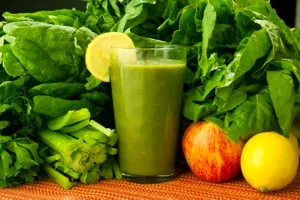
Smoothies, Good and Bad
We’ve learned our lesson – the liquid diets of the 1970’s wreaked havoc with dieters’ health and even cost some their lives. In my own practice, I have had several patients whose liquid diet damage to kidneys and gall bladder led them to consult an alternative and integrative approach. So we’ve learned our lesson, or have we?
We don’t call them liquid diets anymore, but meal replacement drinks or smoothies are popular with almost everyone. Juice bars alternate with coffee shops along the main drag of your vacation destination. Health bloggers promote their favorite green drink as a sure-fire way to get your vegetable intake for the day, mixed in with the supplement of choice.
I disagree.
As a weight loss tool, liquid diets are unnecessary and in some cases still hazardous. Where they are effective, the benefit is often short-lived, as dieters have not learned a sustainable way of eating for weight loss. The Weight Loss Eating Plan on this website offers a program that can get many dieters on the path to successful weight loss.
Outside the realm of weight loss, however, I also have reservations about health smoothies for everyone and everything! I don’t see smoothies as a valid substitute for a meal except in two circumstances.
Problems with Smoothies
The problems with smoothies are two. First you don’t chew your food, and chewing is the first step in digestion that stimulates all the others. No chewing, no salivary enzymes, no pre-warning for the pancreas that food is coming. When the food in the smoothie, proceeds through the digestive tract, it may be mechanically broken down by the blender, but it has not been chemically treated by the usual salivary and other enzymes. I worry that the undigested nutrients can more easily ferment, leading to small intestine bacterial overgrowth, bloating, and abdominal discomfort.
The solution to that problem is sip your smoothie with a meal. Sounds like a good way to get in greens if you wouldn’t otherwise eat them.
The second problem is that the whole bolus of usually very sweet calories can arrive at once in your intestine where it can be quickly absorbed and potentially elevate blood sugar levels too quickly, leading to high insulin levels, rebound hypoglycemia and subsequent metabolic imbalance. People sweeten their greens (the point of the smoothie) with carrots, beets, bananas, and apples, until the entire drink is conveying quite a sugar load.
If you want to liquefy your greens, sip them with a meal, and don’t overly sweeten them.
Smoothies Can be Helpful
All that said, there are two situations in which I recommend people incorporate liquid nourishment into their healthy routine. First, for people who have trouble maintaining weight, an enriched liquid can accompany a meal or be taken between meals. Supplemental liquid nutrition is useful for people with swallowing problems, lack of appetite in general, or worrisome weight loss. Secondly, for athletes who want to supplement with whey protein without consuming yogurt, a whey protein smoothie can be useful. Read about this application of smoothies in the multi-part article called Your Fitness, and see the recipe for my post-workout smoothie.

